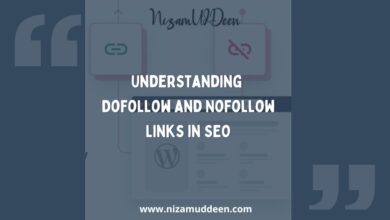Welcome to the world of websites, where making your online space stand out is like creating a roadmap for your visitors.
Think of it like organizing a library – books in the right sections, clear signs pointing the way, and everyone finding what they’re looking for without getting lost.
So, what’s the secret sauce?
It’s called “website hierarchy.”
Imagine it as the structure that makes your website easy to navigate, like chapters in a book or sections in a library.
This isn’t just about looks; it’s about making your visitors happy and telling search engines, “Hey, I’m here, and I’m great!”
Your website has different layers – main pages, subcategories, and individual pages. It’s like organizing a party – the main room, different corners for specific interests, and details in each area.
Making your website easy to use is like throwing the best party in town.
Visitors will love the clear paths, like easy-to-follow signs. Plus, search engines will give your site a high-five, making it more visible when people search for stuff.
Think of this as the fun part – decorating your party space!
Find the right words (keywords) for your guests, make clear signs (navigation), and keep things neat (URL structure). It’s all about making your website look good and work smoothly.
Ready to make your website the talk of the town?
Let’s turn your digital space into the hottest spot on the web!
First Understanding Website Hierarchy
Website hierarchy refers to the way information and content are organized on a website, creating a structured system that helps both users and search engines navigate and understand the content.
In essence, it outlines the relationships between different sections and pages within a website.
Websites often follow a hierarchical structure, where information is organized in levels of importance or relevance.
Content is grouped into categories and subcategories, creating a logical flow of information.
Components of Website Hierarchy:
The components of website hierarchy are the building blocks that contribute to the overall organization of a site.
It is crucial for designing an effective and user-friendly structure by understanding these components .
Main Navigation (Primary Menu):
The main navigation menu typically appears at the top of a website and includes links to essential sections or pages.
It serves as a gateway for users to quickly access key areas of the site.
Subcategories (Organizing Content):
Subcategories are divisions within broader categories, allowing for a more granular organization of content.
They help users navigate to specific topics or themes within a broader subject area.
Individual Pages(Specific Content):
Each individual page contains unique content, representing a specific topic or aspect of the overall theme.
Content within a page can also have its own hierarchy, further enhancing the structure.
Importance of Logical Organization in Website Structure:
The significance of logical organization in website structure extends beyond aesthetic appeal. It directly influences user experience and search engine optimization.
User-Friendly Experience:
A logically organized website is easier for users to navigate, reducing bounce rates and improving user satisfaction.
Search Engine Crawlers:
Search engines use website hierarchy to better understand and index content, impacting how a site ranks in search results.
Keyword Optimization:
Logical organization facilitates effective keyword optimization, enhancing the site’s visibility for relevant search queries.
Understanding these aspects of website hierarchy lays the foundation for creating a website structure that not only meets the needs of users but also aligns with SEO best practices.
Benefits of a Well-Structured Website Hierarchy
One of the primary goals of a well-structured website hierarchy is to enhance the overall user experience. This section explores how a thoughtful organization positively impacts visitors.
A well-structured hierarchy provides clear and intuitive navigation paths for visitors, reducing confusion and frustration.
Navigation menus are designed for simplicity, ensuring users can quickly locate the information they seek.
Information flows logically from one section to another, guiding users through a seamless journey on the website.
Clear pathways diminish the likelihood of users leaving the site prematurely, leading to lower bounce rates and higher engagement.
Pages, Posts and Categories Structure
Navigating the digital landscape becomes seamless when a website adopts a well-structured hierarchy, incorporating distinct elements such as pages, posts, and categories.
Each component plays a vital role in enhancing user experience, facilitating efficient content management, and contributing to improved search engine rankings.
Pages Structuring:
Pages are static and standalone elements on a website. They are typically used for timeless content that doesn’t frequently change, such as an “About Us” page or a “Contact” page.
Pages often serve as the main navigation elements, forming the core structure of the website. They are usually displayed in the site’s main menu and provide essential information about the business or organization.
Posts Structuring:
Posts are dynamic and time-sensitive entries displayed in reverse chronological order.
They are commonly used for blog entries, news updates, or any content that is regularly updated or added.
Posts contribute to the ongoing, evolving content of the website.
They are organized based on categories and tags, making it easy for visitors to find specific topics of interest. Posts often appear on the homepage, showcasing the latest or most relevant content.
Categories Structuring:
Categories are used to group related content together based on common themes or topics.
Each post can belong to one or more categories, helping to organize and classify content.
Categories play a crucial role in creating a structured and navigable website. They help visitors quickly locate information on specific subjects. By grouping posts under relevant categories, the website becomes more user-friendly and accessible.
Benefits of a Well-Structured Website Hierarchy:
- Enhanced User Experience: A clear hierarchy ensures that visitors can easily navigate and find the information they’re looking for. Pages offer static, essential information, while posts provide dynamic and timely updates, creating a well-rounded user experience.
- Improved SEO: Search engines prefer well-organized websites. By categorizing content, using descriptive URLs, and maintaining a logical structure, search engines can better understand and index the site. This contributes to higher search engine rankings.
- Efficient Content Management: A structured hierarchy simplifies content management. Pages serve as foundational elements, and posts are regularly updated within relevant categories. This organization makes it easier for website owners to manage and update their content regularly.
Enhanced SEO Performance:
In addition to benefiting users, a well-structured website hierarchy has a significant impact on search engine optimization (SEO).
The specific ways in which SEO performance is positively influenced.
Search Engine Crawlers and Indexing:
A well-organized hierarchy allows search engine crawlers to navigate and index the site more efficiently.
Clear pathways and organized content enable search engines to index a broader range of pages, improving the overall visibility of the site in search results.
Impact on Keyword Optimization:
The hierarchy aids in strategically placing keywords throughout the site, aligning with user intent and improving relevance.
Logical organization contributes to semantic SEO, helping search engines understand the context and relevance of content based on its placement within the hierarchy.
Knowing these benefits shows how having a well-organized website is a win-win. It not only makes things better for people using the site but also helps the site show up higher in search results.
URL Structure:
URL structure is a critical element of website hierarchy that influences both user experience and search engine optimization.
SEO-Friendly URL Formats:
Craft URLs that are descriptive and readable, providing users and search engines with a clear idea of the page’s content.
Include relevant keywords in the URL, reinforcing the connection between the content and search queries.
Avoiding Complex or Lengthy URLs:
Opt for simple and concise URLs to enhance memorability and ease of sharing.
Remove unnecessary parameters or characters that can clutter the URL, maintaining a clean and user-friendly structure.
Implementing these best practices ensures that the website hierarchy is optimized not only for search engines but also for a positive and intuitive user experience.
Summary of the Topic
In summary, achieving SEO success through a well-structured website hierarchy is a multifaceted endeavor that requires careful planning and implementation. The key points underscore the interplay between user experience and search engine optimization, emphasizing the symbiotic relationship that a thoughtfully organized website fosters.
1. Definition and Components of Website Hierarchy:
- Website hierarchy involves the systematic organization of content into levels of importance and relevance.
- Components include main navigation, subcategories, and individual pages, forming the backbone of a logical structure.
2. Benefits of a Well-Structured Website Hierarchy:
- Improved User Experience:
- Easy navigation and clear pathways enhance user satisfaction.
- Reduction in bounce rates due to intuitive content flow.
- Enhanced SEO Performance:
- Efficient search engine crawlers and comprehensive indexing.
- Strategic keyword optimization for better search engine visibility.
3. Best Practices for Structuring Website Hierarchy:
- Logical and Intuitive Navigation:
- Grouping related content into thematic clusters.
- Creating a user-friendly navigation menu reflecting the overall hierarchy.
- URL Structure:
- Adoption of SEO-friendly, descriptive, and readable URL formats.
- Avoidance of complex or lengthy URLs to maintain simplicity and user-friendliness.
In conclusion, a well-structured website hierarchy not only caters to the needs of users, providing a seamless and enjoyable experience, but also serves as a foundation for effective SEO strategies. By aligning content logically, incorporating relevant keywords, and optimizing navigation, websites can significantly enhance their visibility in search engine results while fostering positive interactions with their audience. As online landscapes evolve, adopting and adapting these principles will remain fundamental to achieving lasting SEO success.



